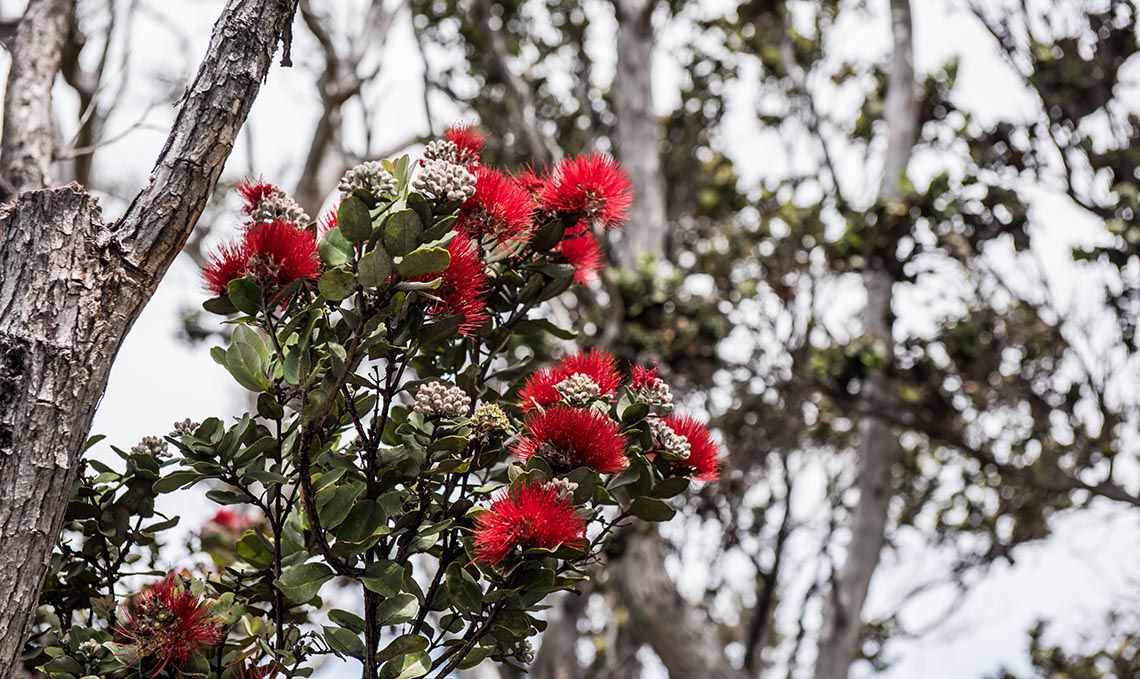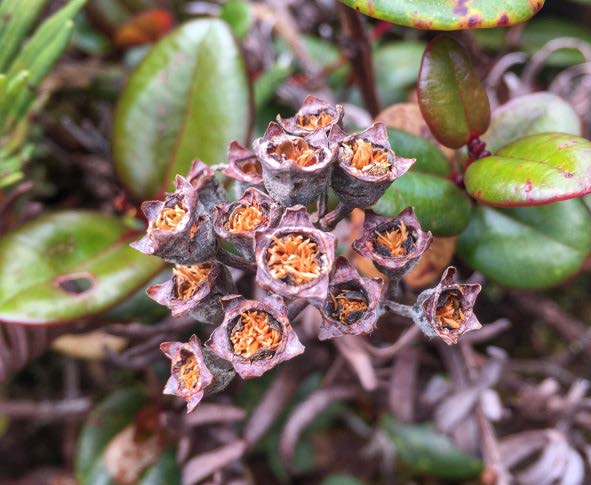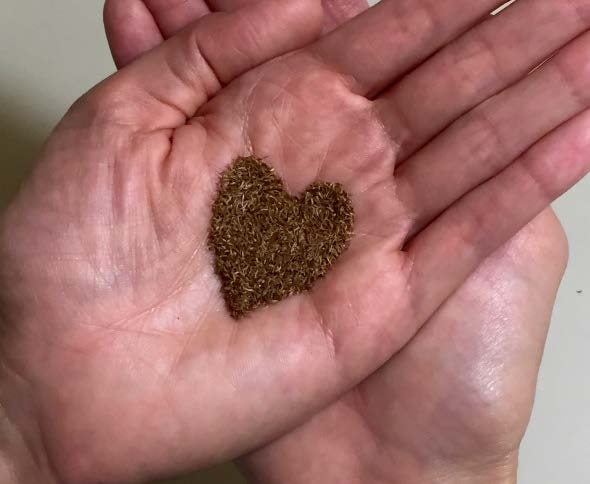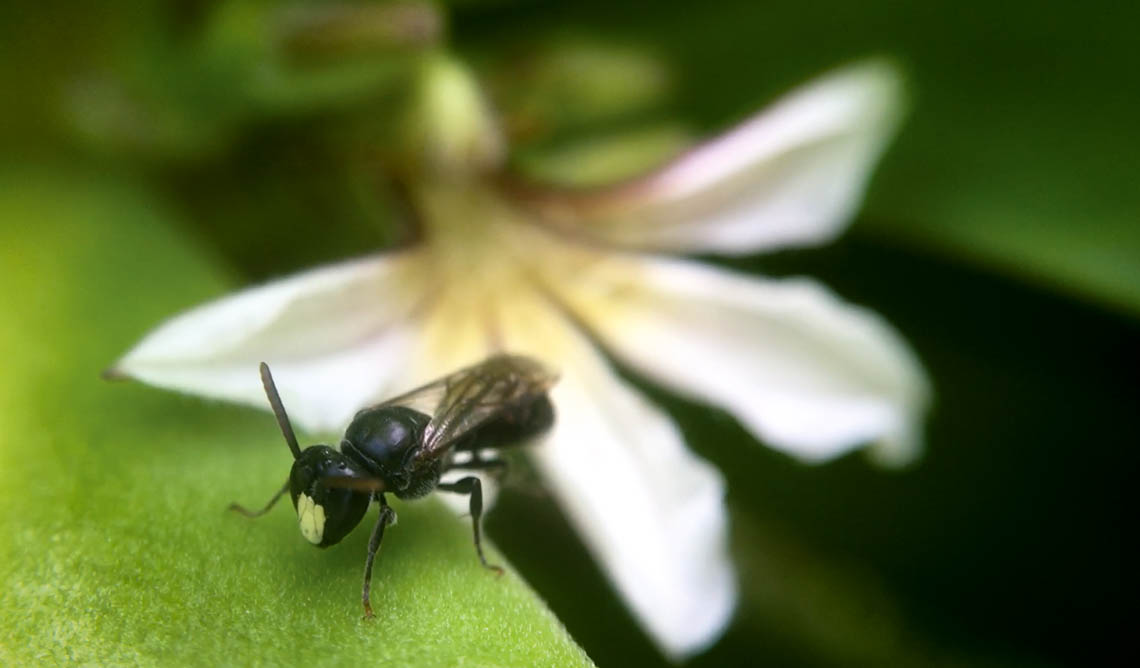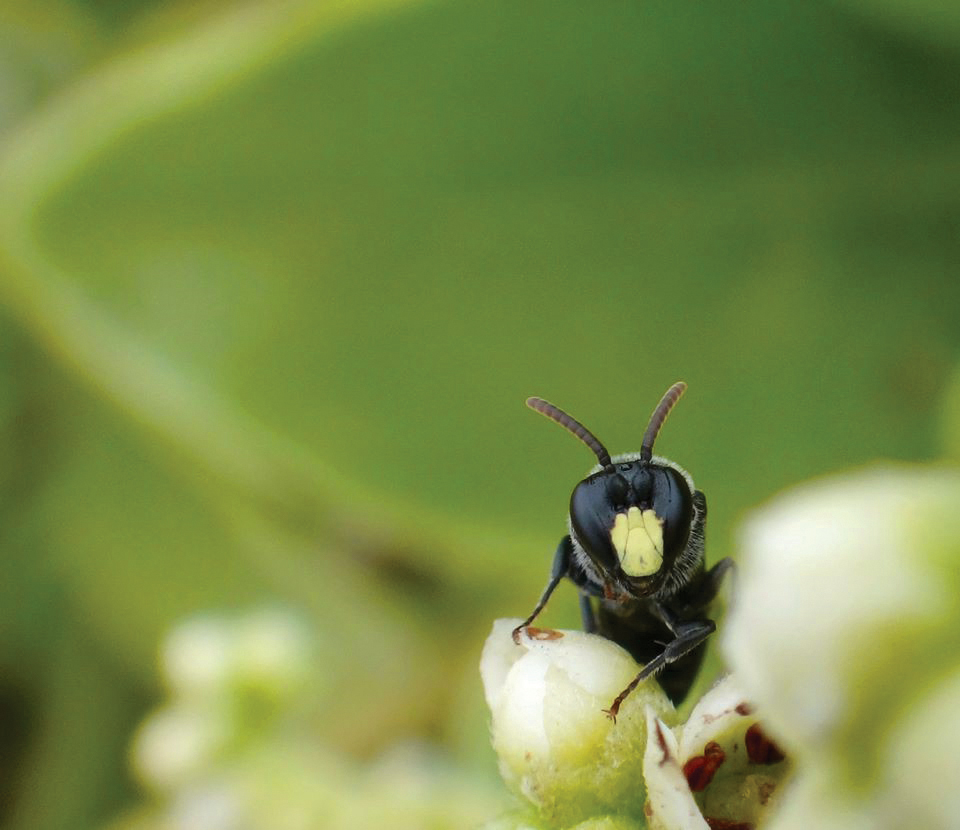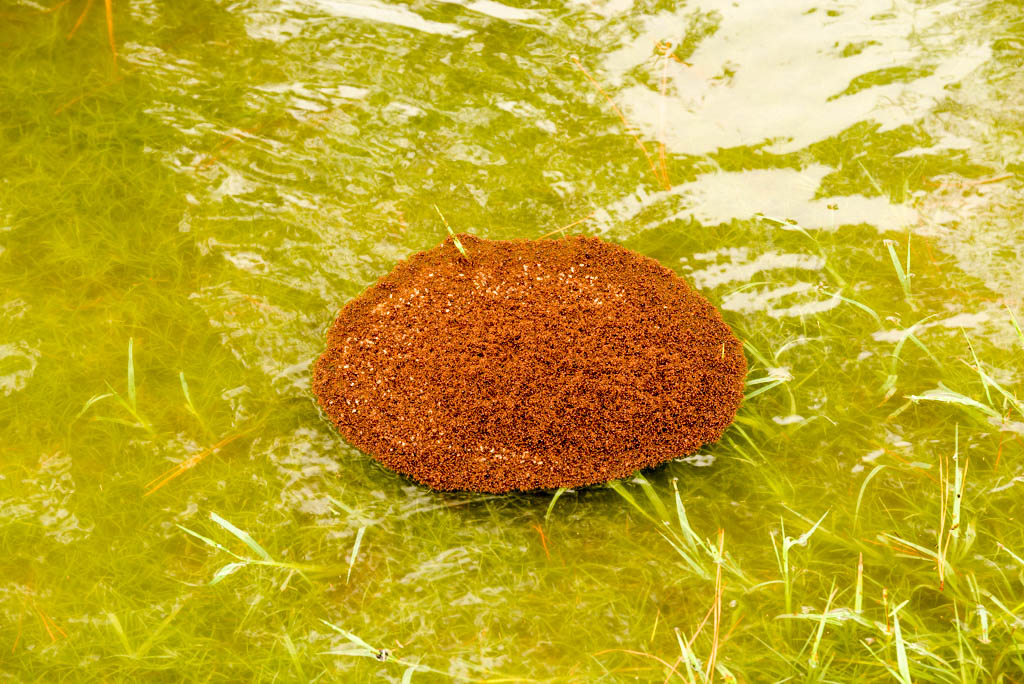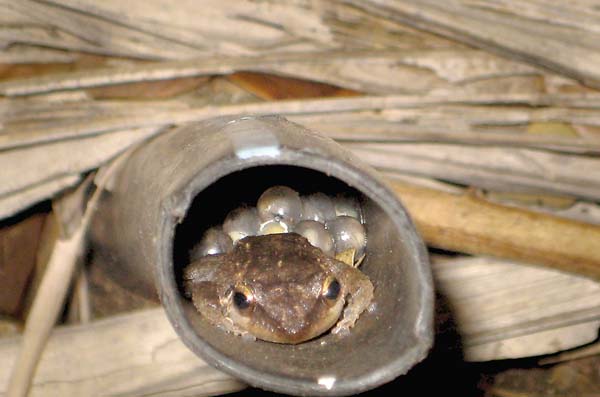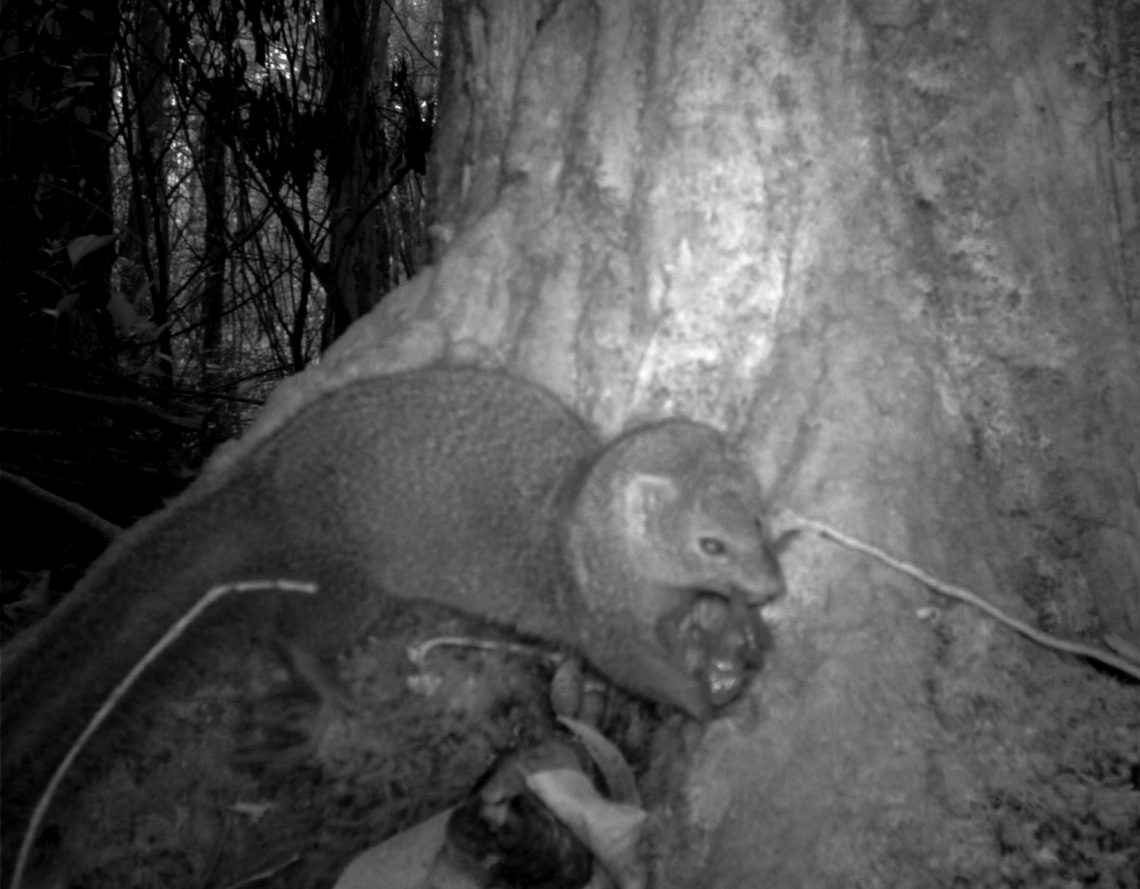
The adage “the more you look, the more you see“ is the basis for the “Pollinators in Paradise” project, a new approach to researching Hawaiʻi’s most important native pollinators: the yellow-faced bees.
As the primary pollinator in the Hawaiian Islands, these bees were once exceedingly common and found from mountain top to coastline. As they collected pollen to eat, these bees pollinated everything from silverswords to naupaka. Today, the Hawaiian yellow-faced bee populations are in decline and likely to become endangered unless the impacts of habitat loss, invasive species, and climate change can be addressed. Researchers are looking to the community for help in learning more about Hawaiʻi’s only native bees.
“Today, the Hawaiian yellow-faced bee populations are in decline and likely to become endangered unless the impacts of habitat loss, invasive species, and climate change can be addressed.”
“There are only a few researchers looking for yellow-faced bees,” says Dr. Jason Graham, one of the researchers and part of the “Pollinators in Paradise” project – a collaboration between Bishop Museum and Graham and funded by a Disney Conservation Grant. The goal of the project is to further Hawaiian yellow-faced bee conservation efforts through education and community involvement. “We hope to have more eyes out there looking for Hawaiian yellow-faced bees.”

Built into the “Pollinators in Paradise” project is training: an interactive exhibit will be housed at Bishop Museum for visitors, there are educational kits available for teachers, and Bishop will use webinars to connect visiting school kids with scientists in the field. The ultimate goal is to have school kids and the community reporting sightings of yellow-faced bees through the online social networking application, iNaturalist. Anyone interested can participate.
Through iNaturalist, community reporters can submit photos of pollinators like the yellow-faced bees. Researchers will review and identify the pollinators. If yellow-faced bees are found, the sightings will be shared with resource managers to help guide future conservation efforts, and these bees need it.
Unlike honeybees, which form large social colonies with a queen and workers doing many tasks, including caring for young, yellow-faced bees are solitary nesters. Solitary bees lay relatively few eggs, stashing only a few dozen young inside a dead twig or in a hollow piece of coral on a rocky shoreline. They leave their young provisioned with food but unprotected from predators. This strategy served them well enough for the millions of years they spent in Hawaiʻi isolated from predators. Since human arrival in the islands, some 50 species of ants have made their way to Hawaiʻi (there are no native ants in Hawaiʻi). When ants find the vulnerable eggs and larvae, they feast.
There are over 60 species of yellow-faced bees native to the Hawaiian Islands. While some may not yet be listed as endangered, all species are in decline, with certain species not seen for 20 years. In October of 2016, seven species of yellow-faced bees gained protection under the Endangered Species Act. To protect what’s left, the scientists need to know more about them, a task that citizen-scientists can help with, once they know where to look.
Graham offers these tips for finding Hawaiian yellow-faced bees:
- Look for native plants: The bees rely on native plants – with much of the islands’ native flora lost to development, agriculture, or taken over by invasive plants, their habitat is fractured. Yet they persist, and sometimes in the most unlikely of places – a patch of native plants growing on the shoreline near a resort for example.
- Look for black bees: Yellow-faced bees do not look like the more familiar honeybee. Yellow-faced bees are slender, smooth, and mostly black, and much smaller than the pure black female carpenter bee, another conspicuous non-native bee common in the islands. Some but not all species have yellow on their faces that help identify them and lead to their unique moniker.
Anyone can participate in the “Pollinators in Paradise” project by downloading iNaturalist and joining the project through the app. Then start snapping photos of pollinators. Graham says cell phone cameras are sufficient for capturing images of the bees — videos work well because they can be paused to show the face of the bee, the key to determining the species. There are special lenses for photographing that clip onto the cell phone camera.
Learn more about the project through the Pollinators in Paradise Facebook page or the page on the iNaturalist application online.
Lissa Strohecker is the public relations and education specialist for the Maui Invasive Species Committee. She holds a biological sciences degree from Montana State University. Kia’i Moku, “Guarding the Island,” is prepared by the Maui Invasive Species Committee to provide information on protecting the island from invasive plants and animals that can threaten the island’s environment, economy, and quality of life.
This article was originally published in the Maui News on December 9th, 2018, as part of the Kia‘i Moku Column from the Maui Invasive Species Committee.
Read more Kiaʻi Moku articles.


